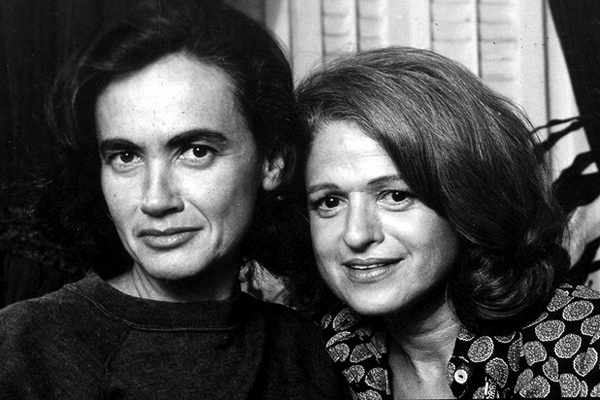|
Reviews of Recent Independent, Foreign, & Documentary Films in Theaters and DVD/Home Video

EDIE & THEA: A VERY LONG ENGAGEMENT Recipients of the best documentary award at the 2009 Hamburg Lesbian and Gay Film Festival, filmmakers Susan Muska and Gréta Olafsdóttir’s Edie and Thea: A Very Long Engagement is receiving wide acclaim throughout and outside the gay community—perhaps because of what the film notably lacks. Muska and Olafsdóttir are no strangers to controversial social issues as their violently disturbing documentary, The Brandon Teena Story (1998), attests. What that film lays bare in terms of a societal (over)-reaction to a transgender youth in Nebraska’s corn belt is conspicuously missing in Edie & Thea. In 2007, clinical psychologist Thea Clara Spyer (age 75) and mathematician/I.B.M computer consultant Edith Schlain Windsor (77) were married in Canada. Windsor, an activist for Services and Advocacy for Gay, Lesbian, Bisexual, & Transgender Elders (SAGE) and other gay rights initiatives, had been married to a man. Divorced and working up the ranks of IBM, she met Spyer at a New York City restaurant in 1962, and as much as Spyer initially resisted monogamy, it was pretty much true love at first sight for both. The couple became officially engaged in 1967 until their marriage 40 years later. Almost two years later, Dr. Spyer was dead from complications related to multiple sclerosis. What’s interesting about this thought-provoking documentary is that it almost doesn’t feel as if it is one, even though the basic structure of the movie is fairly standard. For one thing, the film is very personal—almost like a love letter that Spyer and Windsor write to each other and which the audience is invited to read. Furthermore, at the end, the film is dedicated to Spyer—instilling the idea that like cinema itself, their love will transcend and transmute time. Perhaps because the couple lived a privileged life within a cocoon—in Manhattan, the Hamptons, and around the world—there is also a sense of claustrophobia. This is surmised because of what the filmmakers choose to leave out—namely, society and its reaction to their particular relationship. Putting aside this very unique approach, the couple’s acceptance that a long and beautiful love story might also produce anxiety and feelings of entrapment from which there’s no escape is certainly provocative and in keeping with the filmmakers’ earlier work. Another interesting facet is that there’s an equal balance of still photos and home movies throughout. This non-linear construct creates yet more disorientation so that we’re never certain where the past ends and present time within the film begins. This, too, adds to the insularity that not only keeps Spyer and Windsor contained within the walls of their relationship, but so too, the viewers.
The
most interesting commonality lurking within the constraints of this
documentary and in the choices Edie and Thea make is
freedom, reflected politically through sexual expression, the directors'
cinematic choices, and most importantly, through love—which has a will
of its own. Amy R. Handler
|

